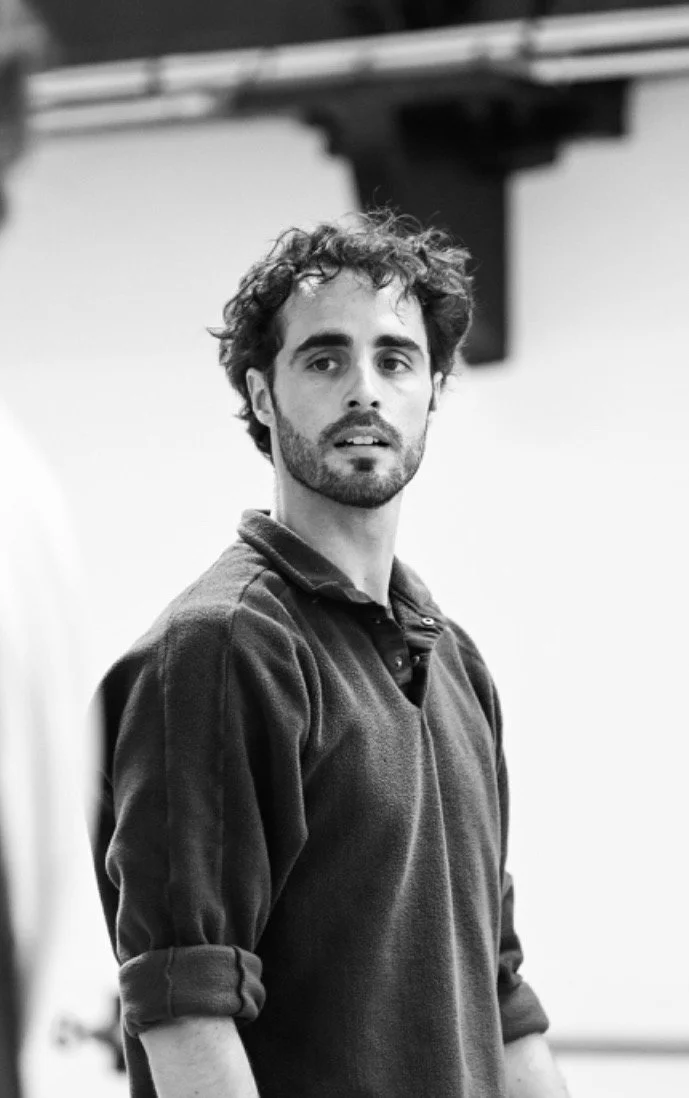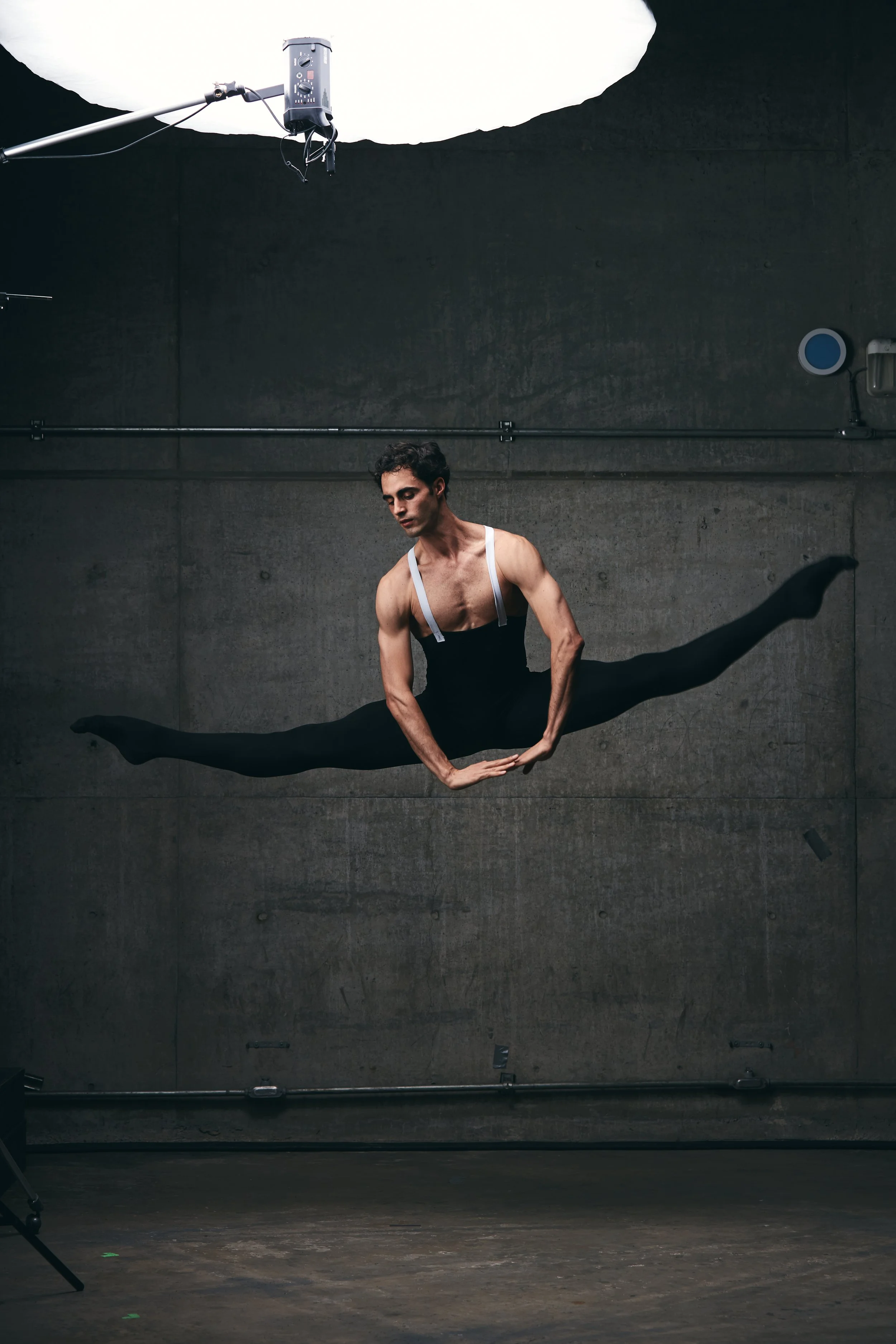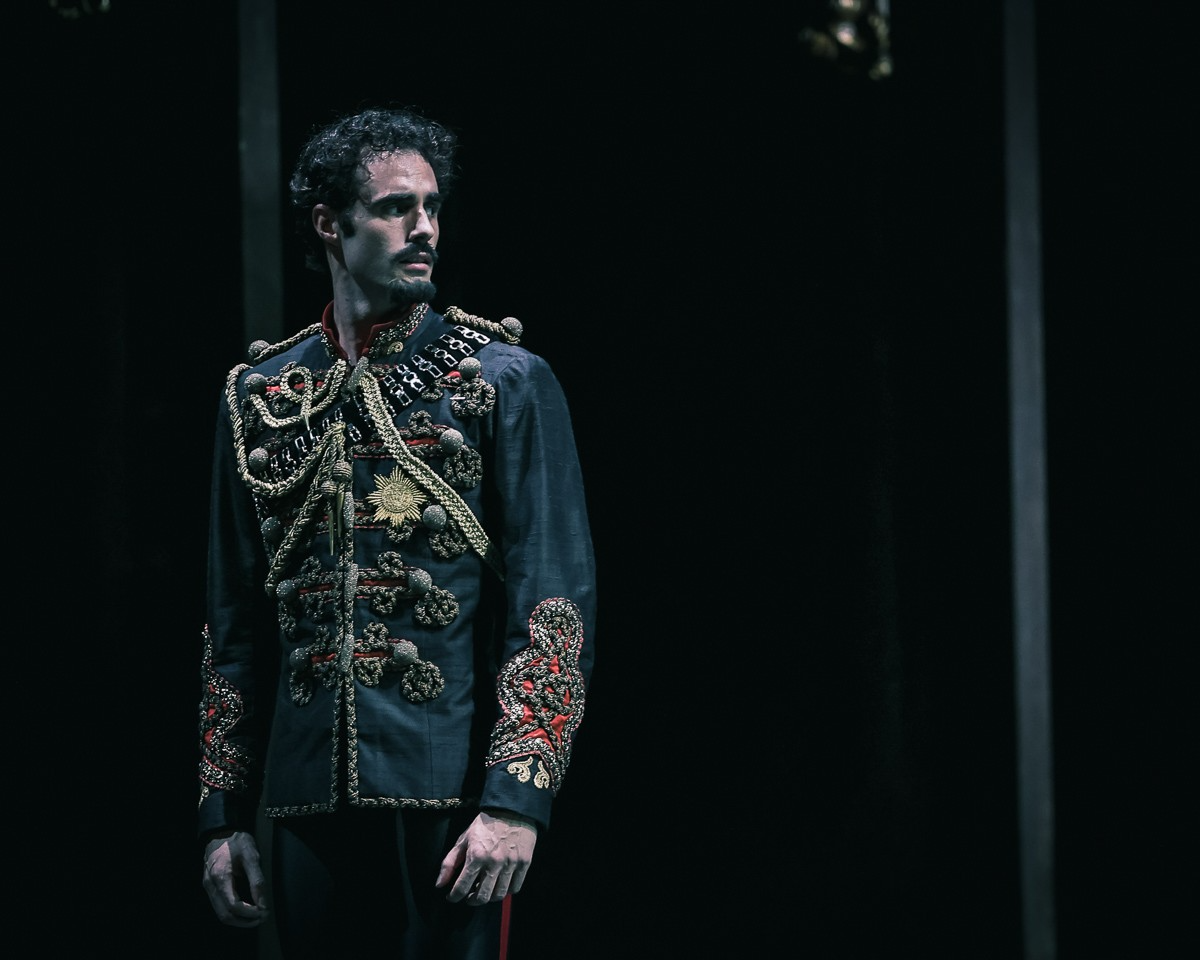Interview with Florent Malec
In the middle of his performances at the Nervi International Ballet Festival, Italy, we caught up with Principal Dancer of the Paris Opéra Ballet, Florent Malec, to discover what inspired his creation of Moonlight; soon to be performed by Lauren Cuthbertson and Gareth Haw at Ballet Under The Stars 2025.
Photo credit: Julien Benhamou
Florent Melac entered the Paris Opéra Ballet school in 2005, and was admitted into the Paris Opéra Ballet company in 2010, he was promoted Coryphée in 2014, Sujet in 2019 and Premier Danseur in 2023.
He regularly performs in a wide variety of repertoire from great classical pieces to contemporary creations:, Le Lac des Cygnes, Roméo et Juliette, Cinderella, la Bayadère, La Belle au Bois Dormant, Casse-noisette (R. Noureev), Caligula, (N. Leriche), Coppélia, Giselle (P. Bart), La Fille Mal Gardée (F. Ashton), Un Jour ou Deux. (M. Cunningham), Paquita, (P. Lacotte), L’Histoire de Manon, (K. MacMillan), Thèmes et Variations, (G. Balanchine), Prince Crown Rudolf in Mayerling (K.MacMillan), the role of Eugene Oneguine in Oneguine (J.Cranko), Rhapsody (F.Ashton), l’Oiseau de Feu (M.Béjart), le Chant du Compagnon Errant (M.Béjart), main part in Blake Works I (William Forsythe), Polyphonia and After The Rain, (C. Wheeldon), Alea Sands and L’Anatomie de la Sensation, (W. McGregor), the classical duet Play (A.Ekman), the creations of Daphnis et Chloé and La nuit s’achève (Benjamin Millepied)
Beside his work at Paris Opéra, Florent frequently performs in galas in France and around the world. Florent Melac is also known as a choreographer of pieces such as A Corps Essence (ballet for 15 dancers and two soloists created at Toronto National’s Ballet School, Paris Opéra Ballet and Stuttgart Staatstheater), Melancholia Splenica (ballet for two couples created at Paris Opéra), Après un Rêve (Pas de Deux created for the Jean-Jacques Henner Museum in Paris) and the pas de deux Opus 27 that he performed with Agnès Letestu in Jean Vilar Theatre in Suresnes, and Theatre du Vesinet. In July 2020 the Modigliani Quartet ask him to choreograph for himself and with Agnes Letestu the Quatuor de Ravel to be performed all together in the Evian Music Festival. In March 2021 Anselm Kiefer asked him to choreograph a piece to illustrate his paintings. It was performed by Hugo Marchand and Hannah O’Neill in his exhibition at the Gagosian gallery. In March 2022 Jean-Marc Luisada (Famous French Pianist) ask him to choreograph Six Mazurkas of Chopin for him to perform at in his concert at the Guimet Museum in Paris. In May 2023, he created for the Auditorium of Orsay Museum a new work for Hannah O’Neill and himself on the complete Piano adaptation of Daphnis et Chloé of Ravel.
Photo credit: Érik Sowaya
What have you been working on recently, Florent?
I recently worked on Sylvia by Manuel Legris! The first ballet performed for the opening of the Opéra Garnier in 1971 and recently revisited by Manuel Legris. I danced the role of Orion. A very interesting character because he is crucial for understanding the ballet's narrative, but also because he possesses a strong presence throughout the ballet. I enjoyed this role because Manuel Legris was able to add complexity to the character compared to the original version, and of course, it's always more enriching as an artist!
I also recently worked with the London City Ballet as choreographer for a new work where my duet "Moonlight" is also featured. Christopher Marney, the Artistic Director, wanted this duet to be part of his new season, but he wished to complement it with a second part in order to create a new piece in its own right. I really enjoyed working with his company and his dancers. It is a new company full of passion and talent that is likely to generate a lot of buzz!
Can you tell us what your favourite role is to dance?
The role I most love to interpret is undoubtedly Prince Rudolf in MacMillan's Mayerling. Once again, in my opinion, the complexity of the character makes it one of the most beautiful male roles in the ballet repertoire. The sequences of pas de deux with his five different partners, as well as the numerous variations of an uniquely styled dance each time, make it the most challenging role! Not to mention the music of Liszt; the most beautiful of composers and whose melodies pierce our hearts!
Photo credit: Maria Helena Buckley
When did you begin your journey into choreography?
I started choreography very early, at 15 years old. I began dancing with an incredible teacher who encouraged us to create through improvisation. And once I joined the Paris Opéra ballet school, the curriculum and the discipline of training left me no room for the imagination of movement. I then jumped at the first opportunities that came my way to regain that sense of creation that I had missed so much. I generally draw inspiration, like most choreographers I think, from music. It is my main driving force! But also, of course, from the dancers I have in front of me. Even though most of the time I choreograph and perform my pas de deux. I actually created Moonlight with Clémence Gross, who is Sujet (Soloist) of the Paris Opéra, while also creating the piece on myself.
Moonlight will be performed at Hatch House, July 2025 by Lauren Cuthbertson and Gareth Haw, what was your inspiration when creating the piece?
Moonlight was created very quickly for the event (Draft Works) organised by the Royal Ballet in London. As is often the case, I created my pas de deux by being inspired by the music. This is a reinterpretation of Beethoven's famous Moonlight Sonata. But this version is not for piano; it is performed by a string quartet. The sounds are much deeper and create an atmosphere that I find almost mysterious and, above all, much more enchanting.
What do you hope people feel, whilst watching Moonlight being performed?
I hope the audience will appreciate the fluidity of the movements and the musicality of the choreography. Through the sequences of circular and complex lifts, I like the idea that they represent the wave's movement on a slightly tumultuous sea. Obviously under the moonlight! It is no coincidence that a German poet, shortly after the composition of this piece, decided to give it this nickname, because he saw, in the first movement of this sonata, the evocation of a 'boat in the moonlight'.
Photo credit: Julien Benhamou
How does it make you feel to receive requests to dance Moonlight from other iconic dancers from across the channel?
I am obviously very happy with the success that this duet has had. And extremely grateful to the people who were able to appreciate it. It is an honour for me that such a prestigious dancer as Lauren Cuthbertson will interpret this duet. I could not have dreamed of anything better.
Many children will be watching the rehearsal of Moonlight, what do you hope it makes them feel?
It is often very hard to maintain a child's concentration; they can easily be distracted by many things! Above all, I hope that this duet provides them with a moment of escape; that is the most important thing for me! And that they manage to appreciate its integrity, also why not create a new passion and give them the desire to dance!




